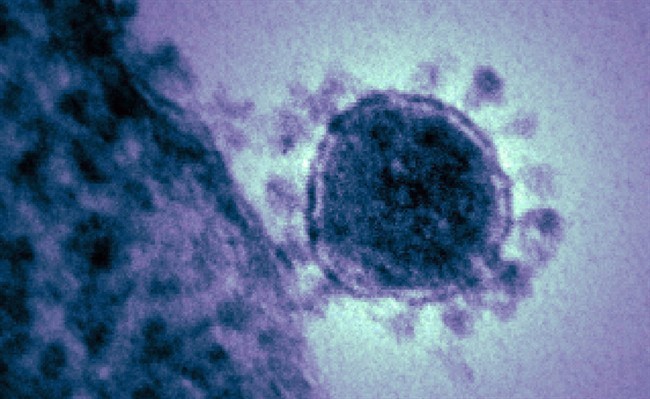The earliest known outbreak of the MERS coronavirus infected at least 10 people, with testing still underway on blood samples from seven people who were likely exposed during the April 2012 incident, officials in Jordan and in the United States have revealed.

Two of the 10 confirmed cases were previously reported. Of the other eight, most were health-care workers from three hospitals which treated patients in an outbreak that started at Zarqa Governorate Hospital southeast of the Jordanian capital of Amman.
Although investigations have failed to pinpoint the first case in the outbreak, it is believe the virus spread among the cases by person-to-person transmission, said Dr. Mohammad Al-Abdallat, director of communicable diseases for Jordan’s Ministry of Health.
“It’s most likely, we can say,” Al-Abdallat said in an interview from Amman.
“Applying infection control measures is very important to containment of this MERS coronavirus outbreak.”
A senior scientist at the U.S. Centers for Disease Control, which collaborated with Jordan on this investigation, said the findings confirm what has been seen elsewhere with this virus. MERS has shown itself capable of spreading in hospitals, said Dr. Mark Pallansch, director of CDC’s division of viral diseases.
But, as has been seen in other settings, most people exposed to the virus don’t develop infection, he said, adding that like other studies which tested blood samples for undetected cases of MERS, this work didn’t find much evidence of mild or asymptomatic cases – the iceberg everyone hopes is under the tip represented by the severe cases that have come to light.
“We are still missing most of the iceberg, if it’s there,” Pallansch said.
“So the fact that there were a very large number of contacts who were negative is still consistent with the fact that there were thousands of samples tested in multiple countries, and (there is) still a relatively modest number of documented cases.”
In April of last year, an outbreak of pneumonia among some patients and staff occurred at Zarqa Hospital. The cause of the outbreak could not be determined at the time.
Of 11 people initially identified as being ill, two died – a nurse and a student who was admitted with pericarditis, an infection of the sac around the heart. Months later, when it was realized that a new coronavirus was causing disease in several countries in the Middle East, samples from those two were pulled out of storage and tested for the MERS virus. They were positive.
Recently Jordan’s health minister and the CDC conducted a study looking for additional cases among survivors of the outbreak, hospital staff who had been exposed to the cases and household contacts of confirmed infections.
Al-Abdallat said blood samples from 124 people were tested for antibodies to the Middle Eastern respiratory syndrome coronavirus.
Those people were: 26 household contacts of cases; three staff from the Ministry of health’s directorate of communicable diseases; 50 health-care workers from Zarqa Hospital, 20 health-care workers from Prince Hamzah Hospital and 16 health-care workers from Islamic Hospital. The latter two hospitals, both in Amman, received patients transferred from Zarqa Hospital.
At least two people who were thought to have been cases in this cluster were not tested. One had left the country and one did not agree to give a blood sample, Al-Abdallat said.
Of the eight newly confirmed cases, six people – all health-care workers – were known to have been sick at the time of the outbreak.
A seventh health-care worker, who had not been identified as part of the cluster at the time, tested positive. He or she reported having been sick, though not sick enough to require hospitalization, said Pallansch. Scientists in his division were involved in the investigation.
The eighth case was a household contact of a confirmed case. When asked, the person did not recall having been sick, Pallansch said.
The additional cases, if added to the World Health Organization’s tally, would bring the global count to 72 cases, 38 of which have been fatal.
WHO spokesperson Gregory Hartl said the agency would want to see the final report before making a decision, but he said it would make sense that the cases would be added to the count.
Testing continues on seven more individuals who are currently designated “indeterminate,” Pallansch said.
He explained that there are still questions about the accuracy of blood tests for MERS, because labs like the CDC which have developed tests have been unable to validate them to this point. To do that, a lab needs both samples known to be negative and samples known to be positive to be sure the test finds only true cases. The only country with lots of positive blood samples is Saudi Arabia, and it is still working out an agreement with the CDC to share blood samples.
So the U.S. agency is using three different tests on the samples. They believe the tests are specific, meaning that positive results are likely true positives, Pallansch said. But they haven’t been able to assess the sensitivity of the tests, meaning they cannot be sure that a negative result is a true negative.
The seven individuals still being studied were positive on one test but negative on a second.
“So serology is not necessarily going to be a good tool to rule out (infections). It may be, but we don’t know yet because of this validation problem,” he said.


Comments